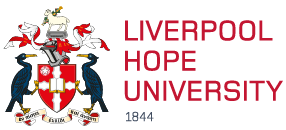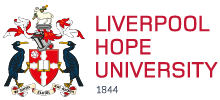As the University launches its campaign to phase out the use of takeaway cups, Sustainability Manager Dr Suzanne Moody discusses the environmental impact of the seemingly innocuous items.
The takeaway cup has transformed the coffee industry and supports our increasingly frenetic on-the-go lifestyle. The UK has a massive coffee addiction; we use over 2.5 billion takeaway cups a year (that’s almost 5,000 per minute! Or 7 million a day) which could circle the planet 5.5 times.
Takeaway cups form just one part of the broader problem of plastics accumulating in the environment, harming and killing wildlife and entering our food chain. The issues of plastic has been most recently highlighted in the BBC’s Blue Planet II documentary and several high-profile campaigns, including the Marine Conservation Society and Surfers Against Sewage. This has heightened consumer and business awareness of the problem, and driven many to start to either reduce and/or eliminate the plastics they use or provide re-usable alternatives. The Government’s 25-year Environment Plan states outlines hopes to eliminate all avoidable plastic waste by 2043; however, many companies have set themselves much earlier deadlines.
So, what’s the problem?
Takeaway cups are paper so can be recycled, right? Wrong! There is a mass misconception that the cups can be recycled, but in reality they just end up contaminating the whole bin full of recycling.
Looks can be deceiving - the paper cups have a thin coating of polyethylene to keep the cups watertight and prevents the paper from going soggy. This small amount of plastic causes a huge problem for the recycling industry, as it cannot easily be separated from the paper and requires specialist processing. There are only three dedicated processing plants in the UK, so less than one in 400 cups are currently recycled. All takeaway cups therefore have to go in the waste bin.
The plastic coating is a major concern, but so is the paper the cups are made from. Food Safety Standards require the cups to be made from virgin paper pulp, as only a small seam of paper comes into contact with the hot liquid, and it’s more durable. It’s estimated that over 100,000 trees are felled annually to fuel our coffee habit.
The huge resources required to make the cups, which are only used for the time it takes for you to finish your latte mocha cappuccino (an average of 15 minutes) and thrown immediately into the bin, create a huge environmental problem – they are a truly single use disposable item.
What are the alternatives?
Take time out to sit down and enjoy your drink using a ceramic mug. The next best thing is to use a reusable cup – they’re available all over and there’s a huge choice of materials (rice husk, bamboo, plastic and stainless steel), colours, sizes and styles; ultimately it’s all about personal preference.
Are they eco-friendly? True, it generally takes more energy/resources to create a reusable/ceramic cup, but they are designed to be used time and time again. Each type of cup will have a number of uses where it becomes more viable to use rather than a takeaway cup.
What are we doing?
We’re saving the planet, one cup at a time! The University currently uses over 150,000 takeaway cups (not including those from Starbucks) and we’re starting to remove their availability, encouraging people to bring their own mugs and introducing more sustainable compostable alternatives. The takeaway cups will be removed from the staff morning coffee/tea stations from Easter and we are looking into ways to reduce their usage across the campus. An awareness raising campaign is underway as a reminder that the takeaway cups are non-recyclable and need to be put in the general waste bin.
Takeaway cups, however, are just one of the problem plastics that we are tackling. We are looking at alternatives to all of the single use plastics that we currently use on campus, and how we use them. Watch this space for more information.



